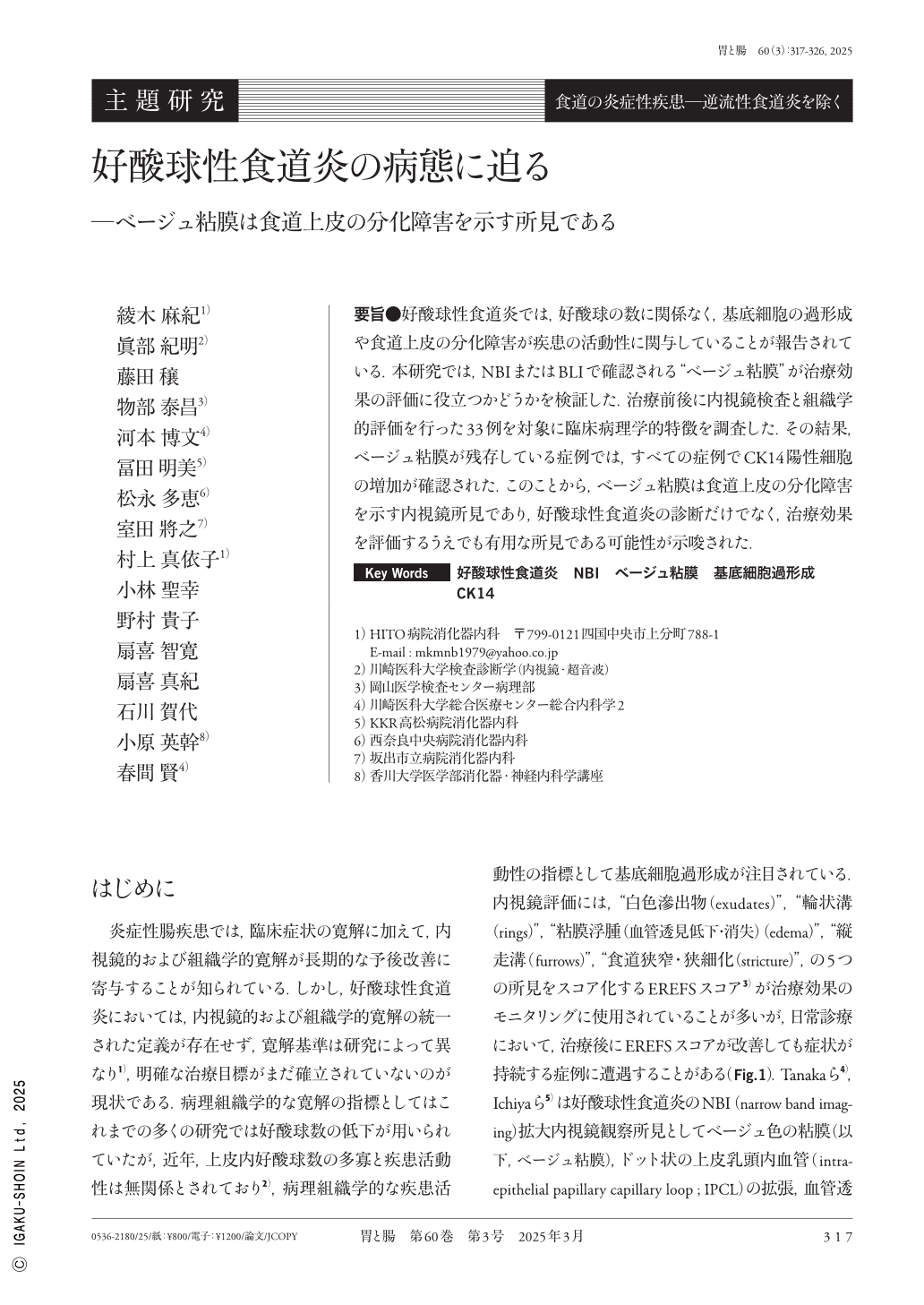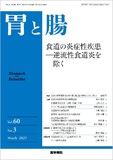Japanese
English
- 有料閲覧
- Abstract 文献概要
- 1ページ目 Look Inside
- 参考文献 Reference
要旨●好酸球性食道炎では,好酸球の数に関係なく,基底細胞の過形成や食道上皮の分化障害が疾患の活動性に関与していることが報告されている.本研究では,NBIまたはBLIで確認される“ベージュ粘膜”が治療効果の評価に役立つかどうかを検証した.治療前後に内視鏡検査と組織学的評価を行った33例を対象に臨床病理学的特徴を調査した.その結果,ベージュ粘膜が残存している症例では,すべての症例でCK14陽性細胞の増加が確認された.このことから,ベージュ粘膜は食道上皮の分化障害を示す内視鏡所見であり,好酸球性食道炎の診断だけでなく,治療効果を評価するうえでも有用な所見である可能性が示唆された.
In patients with eosinophilic esophagitis, basal cell hyperplasia and impaired differentiation of the esophageal epithelium were shown to be associated with disease activity, independent of the eosinophil count. In the present study, we evaluated the clinicopathologic characteristics of 33 patients who underwent endoscopic and histologic evaluation before and after treatment to determine the utility of beige mucosa observed with narrow band imaging(NBI)or blue laser imaging(BLI)in assessing treatment efficacy. The increase in CK14 immunoreactivity was observed in the epithelium of all patients with beige mucosa. The beige mucosa as an endoscopic finding was associated with impaired differentiation of the esophageal epithelium, suggesting its utility as a marker for the diagnosis of eosinophilic esophagitis and the evaluation of treatment efficacy.

Copyright © 2025, Igaku-Shoin Ltd. All rights reserved.


